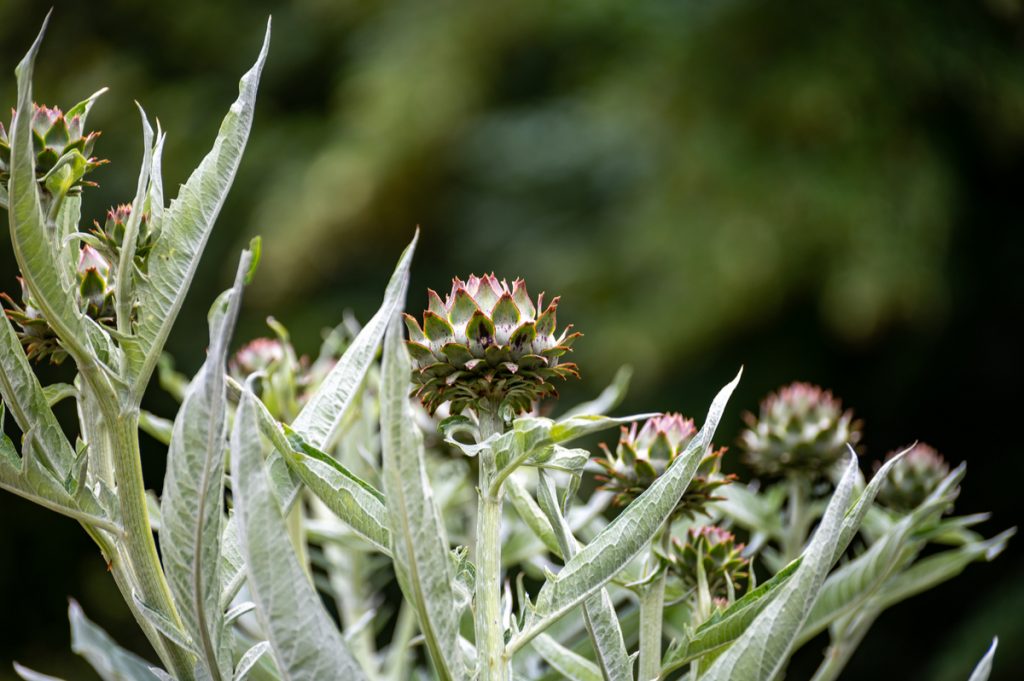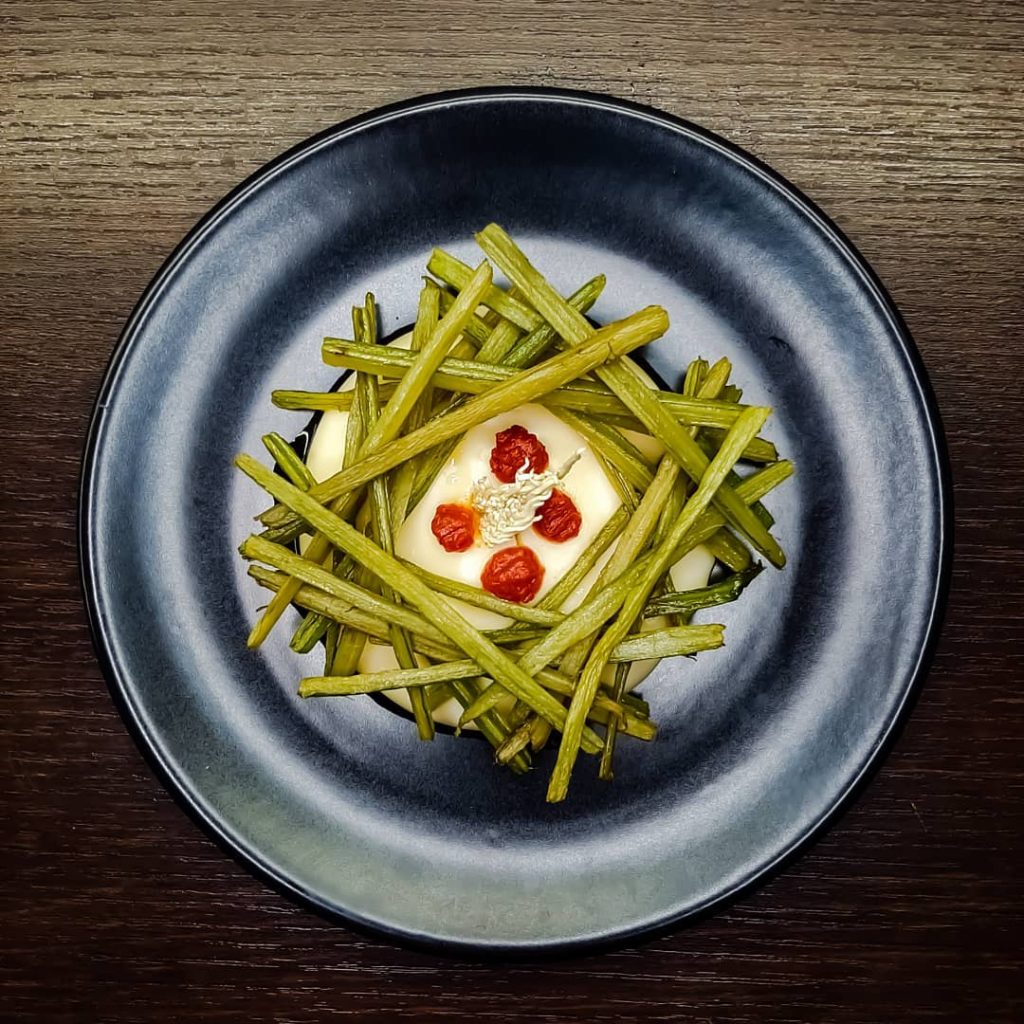
Uno dei piatti più gettonati delle feste in Umbria è la Parmigiana di Gobbi (cardi.) Diffusa in tutta la regione in particolare a Gubbio e Perugia (chiamata anche Parmigiana alla Perugina) è difficile non trovarla nei pranzi o nelle cene di Natale e delle festività del periodo, un must di queste zone dall’ inconfondible sapore che rievoca le numerose rimpatriate in famiglia, ottima come secondo piatto o come contorno.
Una prelibatezza rara e dal sapore unico, quì rivisitata in chiave moderna ma comunque buonissima e da gustare preferibilmente accompagnata da un buon bicchiere di vino rosso, magari un Torgiano doc per rimanere fedeli al territorio. Per chi non lo sapesse i cardi o gobbi sono un ortaggio invernale di forma simile al sedano, ma appartenente alla famiglia dei carciofi.
Anche il sapore è simile a quello del carciofo, caratteristico e amarognolo, ma con sfumature che ricordano il sedano. II cardo ha pochissime calorie ed è ricco di calcio, potassio e sodio. A differenza del carciofo, dei cardi si consumano i gambi che sono lunghissimi: dai 60 ai 150 cm.

II cardo è piuttosto duro e amaro e viene per questo sottoposto a imbiancamento: le piante, cioè, vengono coltivate in assenza di luce, alcune vengono addirittura interrate. La denominazione “gobbo” infatti deriva proprio dal tipo di coltivazione cui è sottoposto, questo ortaggio, per superare la rigidità dell’inverno, viene parzialmente sotterrato; in questo modo la pianta, nel tentativo di cercare la luce, si curva verso l’alto assumendo la caratteristica forma gobba.
Questo trattamento permette alla pianta di superare i mesi più freddi e, in particolare, rende ii gambo bianco, più tenero e delicato al palato. Il cardo è un ortaggio davvero particolare, pensate che con le gelate, la sua consistenza diventa migliore e più tenera, richiede comunque parecchio tempo sia per pulirlo che per cuocerlo. Solo la varietà “Cardo gobbo” di Nizza Monferrato è adatto ad essere consumato anche crudo.
lnsomma un piatto non proprio facile ma che vale sempre la pena provare, rivisitato per dare un tocco di modernità alla tradizione che passa di generazione in generazione permettendoci di non perdere queste ricette preziose.

Parmigiana di Gobbi
lngredienti (4 persone)
- Coste di cardi gr. 700 Burro gr. 40
- Uova n. 2
- Parmigiana gr. 60
- Sugo di carne mezzo litro circa Farina q.b.
- Olio per friggere q.b.
Procedimento
Tagliare a pezzi i cardi per una lunghezza di 8-10 centimetri e dividere le coste, se queste sono grandi, con un coltello togliere molto bene i filamenti lasciando solo la parte interna più tenera, mano a mano, gettarli in un recipiente con acqua resa acidulata con il succo di limone. Fare bollire in acqua salata e, quando con una forchetta si foreranno con facilità, scolare i porri, passare nella farina, quindi nelle uova battute e salate. Friggere nell’olio caldo fino a doratura, asciugare poi su carta da fritto e poi metteterli a strati in una teglia da forno a bordi alti; condire ogni strato con il sugo, e terminare con sugo e parmigiana grattugiato. Passare lo stampo in forno caldo per circa 20 minuti e comunque finchè non formeranno una crosticina dorata in superficie. Sfornare la parmigiana e servire bella calda direttamente dalla pirofila.
N.B. in questa versione, i gobbi, sono fritti ad aria, e impiattati con fonduta di parmigiano e chutney di pomodoro, ideale per chi non volesse eccedere con le calorie e non fare a meno di questa specialità.
Traditional Recipe: Parmigiana di Gobbi
One of the most popular holiday dishes in Umbria is Parmigiana di Gobbi or Cardi (cardoons or artichoke thistle). Widespread throughout the region in particular Gubbio and Perugia (also called Parmigiana alla Perugina), it is not difficult to find it served for lunch or dinner during the Christmas holidays. It is a must-try dish indigenous to these areas with an unmistakable flavor that evokes the numerous family reunions and excellent as a main course or side dish.
Parmigiana di Gobbi is considered to be a rare delicacy with a unique flavor, reinvented here in a modern way, but equally delicious and should be preferably accompanied by a good glass of red wine — perhaps a Torgiano DOC to remain faithful to the territory. For the uninitiated, cardoons are a winter vegetable similar in shape to celery, but belong to the artichoke family.
Also, the flavor is similar to that of the artichoke, bitter in character, but with nuances reminiscent of celery. Cardoon has very few calories and is rich in calcium, potassium and sodium. Unlike the artichoke, the stalks of cardoons are very long: from 60 to 150 cm.
The cardoon is rather hard and bitter and is therefore subjected to whitening; that is, the plants are grown in the absence of light, some are even buried. The name “gobbo” (or gibbous in English) derives from the type of cultivation to which this vegetable is subjected. To overcome the rigidity of winter, it is partially buried. In this way the plant, in an attempt to find light, bends upwards assuming the characteristic gobbo shape.
This treatment allows the plant to overcome the colder months and, in particular, makes the stem white, more tender and delicate on the palate. Cardoon is a very special vegetable that when subjected to frost, its consistency becomes better and more tender. However, it requires a lot of time both to clean it and to cook it. Only the variety “Cardo gobbo” of Nizza Monferrato is suitable for raw consumption.
In short, here is a dish that is not exactly easy, but that is always worth trying. This recipe offers a touch of modernity to a tradition that has passed from generation to generation allowing us not to lose these precious recipes.
Parmigiana di Gobbi
Ingredients (4 people)
- Ribs of cardoons gr. 700
- Butter gr. 40
- Eggs n. 2
- Parmesan cheese gr. 60
- Meat sauce about half a liter
- Flour as needed
- Oil for frying as needed
Preparation Method
Cut cardoons into pieces for a length of 8-10 centimeters and divide the ribs, if these are large; remove the filaments very well with a knife leaving only the softer inner part, gradually, throw them into a container with water acidulated with lemon juice. Boil in salted water and, when they pierce easily with a fork, drain the cardoons, pass them in the flour, then in the beaten and salted eggs.
Fry in hot oil until golden brown, then dry on absorbent paper and then put them in layers on a high-sided baking tray; season each layer with the sauce, and finish with the sauce and grated Parmesan. Put the mold in hot oven for about 20 minutes and in any case until they form a golden crust on the surface.
Remove the Parmigiana from the oven and serve hot straight from the tray.
Note: In this version, the “gobbi” are air-fried and served with parmesan fondue and tomato chutney making it ideal for those who do not want excess calories, but want to enjoy this specialty.



eccellente e anche notevole sito blog. C’è la voglia ringraziarvi,
per averci fornito una migliore informazione.
Grazie mille!